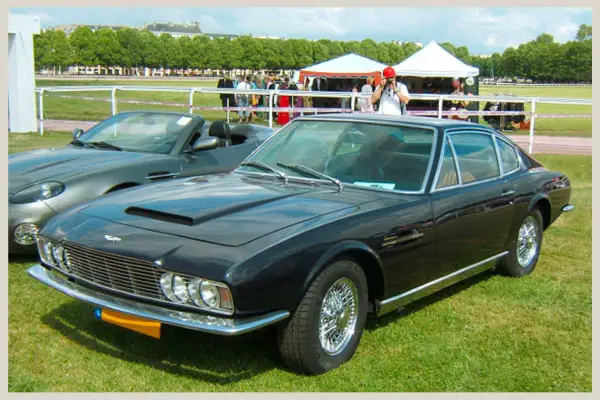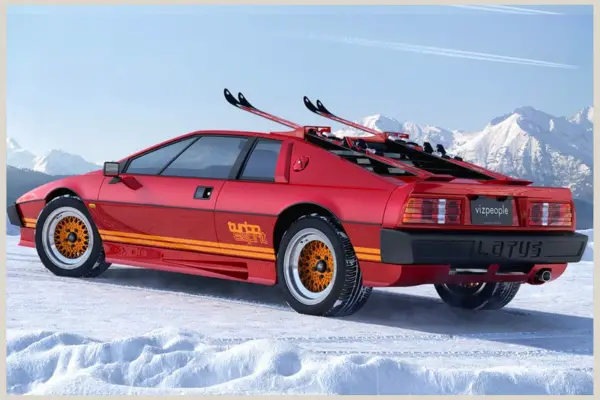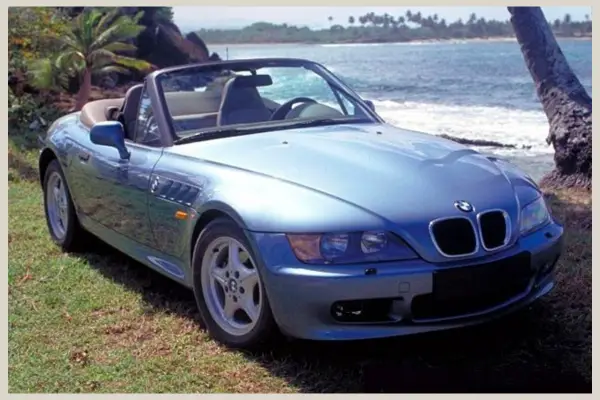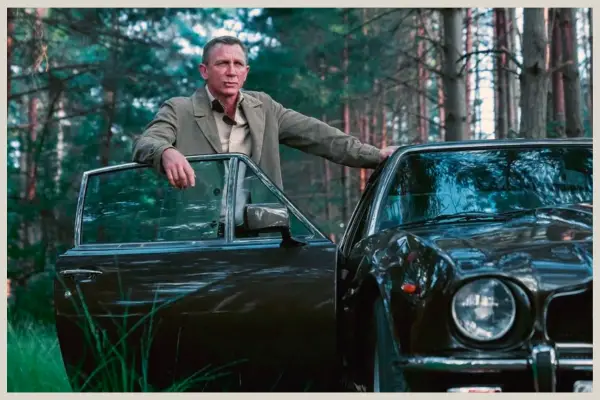What Car Does James Bond Drive? Diving into 007’s Iconic Rides
When you hear the name James Bond, several things might come to mind: tuxedos, sophistication, gadgets, and of course, fabulous cars. ‘What car does James Bond drive?’ you might ask. The truth is, over the course of cinema history, he has been associated with a bevy of vehicles, making him quite the car enthusiast.
Bond’s relationship with cars is legendary, and have become an intrinsic part of his very identity. Just as Bond has evolved over the decades, so too have his cars, mirroring the changing tastes and technological advancements of the times. From the sleek curves of the Aston Martin to the rugged prowess of the Land Rover, these vehicles have become an indelible part of the 007 franchise.
While Bond has, let’s say, ‘acquired’ (or occasionally borrowed without permission) and been transported in numerous cars throughout his adventures, our focus today will be on the main cars. The ones he uses as his main car in any investigation.
So, stay with us as we take a ride through history, exploring what cars James Bond drives.
The Aston Martin DB5: Bond’s Quintessential Ride
The Aston Martin DB5 is more than just a car, it’s an emblem of the James Bond legacy. Even those unfamiliar with the intricacies of the 007 saga recognize this iconic vehicle. And if one were to pinpoint a signature car for 007, the DB5 would undoubtedly be it.
The Aston Martin DB5 transcends the realm of automobiles to occupy a hallowed space in cinema history. When one asks, “What car does James Bond drive?” the DB5 is often the first that springs to mind. Its association with James Bond solidified its legendary status, making it as much a character in the films as the charismatic agents and villains.
Making its debut in Goldfinger in 1964, the DB5 immediately stole the spotlight. Its charm was so undeniable that it made reappearances in subsequent Bond films, including Thunderball, GoldenEye, Tomorrow Never Dies, The World is Not Enough (briefly), Casino Royale, Skyfall, Spectre and No Time to Die. Each time, it was welcomed with nostalgic reverence by fans worldwide.

Being Bond’s car, the Aston Martin DB5 wasn’t just about looks and speed. Q, MI6’s tech genius, ensured it was packed with spy-worthy gadgets, and each appearance has brought different gadgets.
Some of its most iconic features include the revolving license plates, perfect for a quick identity change, a rear smoke screen and oil slick dispenser to deter pursuers, a headlight machine guns, and, of course, the passenger ejector seat – always a surprise for any unwelcome guest.
At its heart, the DB5 boasts a 4.0-liter engine, producing around 282 horsepower, which in its time, was no small feat. Its top speed? A cool 145 mph. Beyond performance, its design is a masterclass in 1960s elegance, with a Silver Birch finish being the chosen shade for Bond.
Its legacy? The DB5 is not only a testament to James Bond’s enduring appeal but also to Aston Martin’s craftsmanship. In many ways, the car has come to symbolize the pinnacle of British luxury and performance.
All Other Cars: A Glimpse into Bond’s Diverse Garage
Sunbeam Alpine
The Sunbeam Alpine made its cinematic entrance in the first James Bond film Dr. No. It’s not actually his car, but he uses it while he’s investigating in Jamaica.
Unlike many of Bond’s later cars, the Sunbeam Alpine was gadget-free. It was early in the series, before Q’s laboratory began outfitting 007’s vehicles with an array of spy-tech goodies. That said, its agility and performance during the mountain road chase scene demonstrated that it didn’t necessarily need hidden tricks to stand out.
The Sunbeam Alpine is a British sports car, known for its open two-seater design. Under its hood, it sports a four-cylinder engine, and while its horsepower might seem modest by today’s standards, its lightweight design made it nimble and quick, perfect for spirited driving.
Historically, the Alpine holds its own significance as it was among the first British sports cars to be marketed specifically to the American market, where it enjoyed decent popularity in the 1950s and ’60s. Its appearance in Dr. No only solidified its position as a classic of that era.
Bentley Mark IV
The Bentley Mark IV featured in From Russia with Love (1963), the second James Bond film starring Sean Connery as 007. We don’t see him driving it, but it’s parked up while he and Sylvia Trench are relaxing by the canal.
Though the Bentley Mark IV in the film didn’t have an array of high-tech gadgets like many other Bond cars, it did come with a special feature: a car telephone. For the early 1960s, this was quite advanced and luxurious, and it hinted at Bond’s preference for vehicles with a tech edge.
Technically, there isn’t a “Bentley Mark IV.” The car in the film is often referred to as a Bentley Mark IV for simplicity, but it’s actually a Bentley 3.5 Litre or 4.25 Litre, depending on the engine.
Produced in the 1930s, these Bentleys were known for their performance and luxury. In the original Ian Fleming novels, James Bond drove a Bentley, making the inclusion of this vehicle in From Russia with Love a nod to the literary origins of the character.
Aston Martin DBS
The Aston Martin DBS has made several appearances in the Bond universe. Its cinematic debut was in On Her Majesty’s Secret Service (1969) with George Lazenby behind the wheel. Later, the modern version of the DBS, the DBS V12 became Bond’s car, but we’ll get to that later.

While later iterations of the DBS, like the DBS V12, would become famous for an array of tech-savvy modifications, the DBS in On Her Majesty’s Secret Service was refreshingly devoid of the often-extravagant Bond car gadgets. That said, the very power and elegance of the car’s engine was a spectacle in itself, embodying a gadgetry that resonated with Bond’s character.
Under the hood, the original Aston Martin DBS was powered by a formidable straight-six engine, churning out 282 bhp. This allowed it to achieve impressive speeds, capping off around 140 mph. Designed as a grand tourer, the DBS was a beautiful blend of raw power and unmatched luxury — a perfect fit for 007.
Lotus Esprit S1
The Lotus Esprit S1 made a splash, quite literally, in the 1977 James Bond film The Spy Who Loved Me with Roger Moore portraying the iconic spy.
One of the most memorable Bond cars, the Lotus Esprit S1 is renowned for its unique ability to transform into a submarine. Outfitted by Q’s lab, the car featured an array of gadgets for what is commonly known as the James Bond Submarine Car.
On the aquatic side, it boasted propellers for underwater movement, periscope surveillance, and missile launchers to fend off anyone from the seabed up into the sky. On land, it wasn’t short of surprises either, with a cement sprayer to immobilize pursuers and an anti-aircraft missile system.
Beyond its cinematic fame, the Lotus Esprit S1 is a celebrated British sports car. Powered by a 2.0-liter four-cylinder engine, it churned out a modest 160 horsepower.
However, the car’s lightweight fiberglass body and agile handling made it a joy to drive, emphasizing finesse over sheer power. Its wedge-shaped design, penned by the Italian designer Giorgetto Giugiaro, was futuristic for its time and has since become emblematic of sports car aesthetics of the late 1970s.
Lotus Esprit Turbo
The Lotus Esprit Turbo showcased its prowess in the 1981 James Bond film For Your Eyes Only, once again with Roger Moore donning the role of the enigmatic agent 007.
True to Bond style, the Lotus Esprit Turbo wasn’t just about speed and elegance. It came equipped with an array of gadgets including a self-destruct capability (which unfortunately gets triggered accidentally in the film), a rear-facing rocket propulsion system, and skis and spikes for winter terrains. And, its anti-theft system was not to be trifled with, when tampered with, the car would explode!

The Lotus Esprit Turbo was an evolution of its predecessor, the Esprit S1, albeit this was was no sea creature. The turbocharged variant meant more power, with its 2.2-liter four-cylinder engine producing a commendable 210 horsepower. The car’s design underwent some refinements too, with a more aggressive stance, distinctive side air intakes, and a rear spoiler, lending it a racier and more dominant look.
As with the earlier model, the Lotus Espirit Turbo design leaned heavily into the wedge aesthetics that became emblematic of supercar designs during that era.
Aston Martin V8 Vantage Volante
The Aston Martin V8 Vantage Volante sped into the Bond universe in the 1987 film The Living Daylights, with Timothy Dalton portraying the suave secret agent for the first time.
In typical Bond fashion, the Aston Martin V8 Vantage Volante was no ordinary luxury car. Outfitted by Q’s workshop, this vehicle was teeming with spy tech.
Among its notable gadgets were retractable outriggers for icy terrains, lasers mounted in the wheel hubs, a rear rocket propulsion system for a quick escape, a self-destruct mechanism, and a police band radio. It also boasted a bulletproof windshield and could even fire missiles from the front.
The Aston Martin V8 Vantage Volante was a powerful beast beneath its suave exterior. “Volante” in Aston Martin parlance means convertible, and this car combined open-air elegance with sheer power.
At its heart was a 5.3-liter V8 engine, pushing out approximately 380 horsepower. In its day, the V8 Vantage was hailed as “Britain’s First Supercar” for its 170 mph top speed and a 0-60 mph time of just 5.3 seconds, making it a favorite among fans of both car fanatics and the 007 franchise.
BMW Z3 in Goldeneye
The BMW Z3 made was one of Pierce Brosnan‘s first cars in the 1995 James Bond film GoldenEye.
In a departure from the usual Aston Martins, the BMW Z3 was the first of three BMWs to be featured in the Bond series. Q introduced the Z3 with a suite of gadgets, promising Bond a lot of surprises.
Some of its standout features included a self-destruct system, stinger missiles behind the headlights, a parachute braking system, and a radar scanner in the dashboard. But, the film didn’t showcase most of these in action, leaving many to the audience’s imagination.

The BMW Z3 was the first BMW to be manufactured in the United States, with production based in South Carolina. Upon its introduction, it was a roadster that emphasized style and luxury over sheer performance. Its standard engine was a 1.9-liter four-cylinder, producing around 138 horsepower.
Although its cinematic version promised rockets and high-tech spy equipment, the real-world Z3 was more about enjoying an open-top driving experience. The film’s release and the car’s appearance as Bond’s ride gave a significant boost to the Z3’s sales and reputation.
BMW 750iL
The luxurious BMW 750iL made its mark in the 1997 James Bond film Tomorrow Never Dies, with Pierce Brosnan reprising his role for the second time.
Among its numerous gadgets were bulletproof windows and bodywork, a self-sealing and re-inflating tire system, and an electrified security system to deter any unwanted intruders.
One of the most iconic features was its remote-control driving capability, allowing Bond to operate the vehicle using his Ericsson mobile phone. This feature led to a memorable parking garage chase sequence in which Bond steered the car from the backseat using the phone. The car also boasted rockets hidden behind the sunroof and tear gas dispensers.
The BMW 750iL is a part of the brand’s flagship 7 Series, known for luxury, refinement, and powerful performance. Powered by a 5.4-liter V12 engine, it produces a hefty 322 horsepower, making it one of the more powerful sedans of its time.
The car is laden with advanced technology and comfort features, befitting its status as a top-of-the-line executive saloon. The inclusion of the 750iL in Tomorrow Never Dies further solidified the collaboration between the Bond franchise and BMW during the Brosnan era.
BMW Z8
The sleek and stylish BMW Z8 had its moment in the spotlight in the 1999 James Bond film The World Is Not Enough, once again featuring Pierce Brosnan as the dashing agent 007.
The BMW Z8 was no ordinary sports car, especially when it was tailored for Bond. Among its impressive gadgetry were the surface-to-air missiles concealed within the car, launched from behind the grille.

The Z8 also featured a high-tech radar-guided targeting system integrated into the car’s dashboard. Unfortunately, the car met an untimely end in the movie, being sliced in half by a helicopter equipped with huge saws.
The BMW Z8 was a nod to BMW’s rich heritage, drawing design inspiration from the classic BMW 507 roadster of the 1950s. Under the hood, the Z8 boasted a powerful 4.9-liter V8 engine, churning out 400 horsepower, making it a formidable presence on the road.
The car was not only powerful but also exquisitely designed, with a sleek aluminum body and an interior rich in luxury finishes. Production of the Z8 was limited, making it a sought-after collector’s item today.
Aston Martin V12 Vanquish
The Aston Martin V12 Vanquish roared onto the big screen in the 2002 James Bond film Die Another Day, with Pierce Brosnan at the helm for the fourth and final outing.
Being an Aston Martin equipped for James Bond, the V12 Vanquish (or “Vanish” as it was humorously referred to) was packed with high-tech gadgetry. Its most celebrated feature was the adaptive camouflage system, which rendered the car virtually invisible at the push of a button.
Alongside this cloaking device, the Vanquish came equipped with ejector seats, front-firing rockets, target-seeking shotguns behind the grille, and retractable spiked tires for icy terrains. The car was also capable of firing missiles and had reinforced armor for added protection.

The Vanquish itself was a marvel of engineering, sporting a 5.9-liter V12 engine that generated a whopping 460 horsepower. This power allowed the car to sprint from 0 to 60 mph in under 5 seconds and reach top speeds nearing 190 mph.
Its sleek design, combined with the aggressive stance and performance, made it a true flagship for Aston Martin during the early 2000s. Its appearance in Die Another Day also celebrated the 40th anniversary of the James Bond film series, rekindling the long-standing relationship between 007 and Aston Martin after Bond had been using mostly BMW’s in the three previous films.
Aston Martin DBS V12
The modern version of the DBS, the Aston Martin DBS V12 made a significant impact in the world of 007, gracing the screen in two James Bond films: Casino Royale (2006) and Quantum of Solace (2008). Both movies featured Daniel Craig portraying a more gritty and intense Bond, and the DBS V12 complemented this new persona impeccably.
While the movies from the Daniel Craig era adopted a more realistic approach to spy gadgetry, the DBS V12 was not entirely devoid of Bond-specific enhancements. In Casino Royale, the car featured a concealed compartment housing a defibrillator and a poison detection kit, both of which played crucial roles in the movie’s plot.
The Aston Martin DBS V12 was designed as a grand tourer, marrying luxurious craftsmanship with high performance. Powering the car was a naturally aspirated 5.9-liter V12 engine that produced 510 horsepower, enabling the DBS to accelerate from 0 to 60 mph in just 4.3 seconds.
Its dramatic design, with broad shoulders and a muscular stance, echoed the raw intensity and sophistication of the modern Bond. One of the most memorable scenes involving the DBS is the high-speed chase in Casino Royale, culminating in a record-breaking seven-barrel roll crash, which earned the movie a Guinness World Record for the most cannon rolls in a car.
Aston Martin DB10
The Aston Martin DB10 was specifically designed for the 2015 James Bond film Spectre. This vehicle was unique as it was not a production car available for public purchase, but rather a model created exclusively for the Bond franchise.

True to Bond form, the DB10 came equipped with several bespoke spy gadgets for 007’s mission. Among its features were flame throwers integrated into the rear exhaust system, an ejection seat reminiscent of classic Bond cars, a retractable rear bullet shield, and spikes that could be released from the tires for added traction. The car also showcased a stylish digital interface inside, providing Bond with crucial mission information and controls for the various gadgets.
Only ten units of the Aston Martin DB10 were ever produced, making it one of the rarest cars associated with the Bond franchise. Under its sleek and aerodynamic body, the DB10 boasted a 4.7-liter V8 engine, allowing it to reach speeds of up to 190 mph.
The design of the DB10 hinted at the future design direction for Aston Martin production cars, influencing models like the Vantage that followed. Its exclusivity and connection with Spectre have since turned the DB10 into a highly sought-after collector’s item, with one of the cars auctioned for charity fetching over £2.4 million in 2016. Although, Aston Martin did release the similar DB9 GT for public sale.
Land Rover Series III
The rugged Land Rover Series III made a memorable appearance in the 2021 James Bond film No Time to Die. With Daniel Craig portraying Bond, this vehicle was a departure from the luxury sports cars often associated with 007, showcasing a more utilitarian side fitting for a retired Agent.
In No Time to Die, Bond has stepped away from active MI6 duty, and as such, his Land Rover Series III doesn’t come with the usual array of high-tech spy gadgets. Instead, it embodies simplicity, reliability, and ruggedness, traits befitting a retired agent attempting to live a more “ordinary” life in Jamaica.

The Land Rover Series III is an iconic British off-roader, produced between 1971 and 1985. Known for its durability and capability, the Series III was a popular choice for both military and civilian use in diverse terrains worldwide. It features a range of engine options, but many were powered by a 2.25-liter petrol or diesel engine.
With its distinct boxy design, robust construction, and minimalistic interior, the Series III is recognized and revered by off-road enthusiasts. And its appearance in No Time to Die resonated with fans, as it showcased Bond’s connection to his British roots and his desire for simplicity in his retirement.
James Bond’s Relationship with Cars
The relationship between James Bond and his vehicles extends far beyond the asphalt, deep into the essence of the character. Over the years, cars have become not just instruments of transportation for Bond but icons, allies, and even narrative devices that enhance the films.
Equipped with state-of-the-art gadgets, these cars often serve as extensions of Bond himself — tools for defense, offense, and sometimes even subterfuge. The Aston Martin DB5’s ejection seat or the Lotus Esprit’s ability to transform into a submarine are prime examples of cars taking on roles far more significant than mere modes of transport.
Over the decades, strategic brand partnerships have left an indelible mark on the Bond franchise. Certain automakers, most notably Aston Martin, Lotus and BMW have become so intertwined with the Bond identity that they’re almost inseparable from the spy’s image.
These partnerships serve a dual purpose. For brands, association with the suave and daring 007 elevates their global prestige, while for the films, the luxury and excellence of these cars reinforce Bond’s status as a symbol of sophistication and style.
What Car Does James Bond Drive?
What car does James Bond drive? Well, he has driven a vast array of cars over the decades. From the elegance of the Bentley Mark IV to the raw power of the Aston Martin DB5, each car tells a story, reflecting the changing eras of cinema, technology, and the very essence of Bond himself.
While the gadgets and thrilling chases captivate audiences, it’s the connection Bond and his cars share truly resonates. These vehicles have become characters in their own right, driving the narrative forward, both literally and figuratively.





